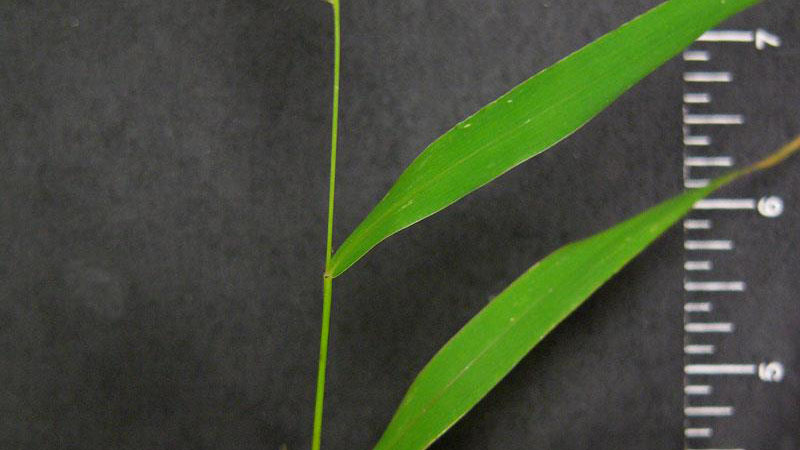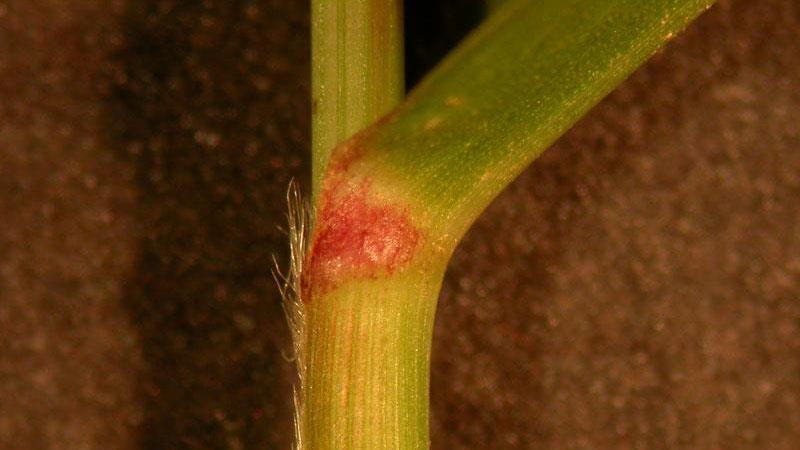Description
Green foxtail (Setaria viridis) is a bright green clumping annual weed common in turf and pasture areas. The seedheads can be distinguished from those of other foxtails because they are smaller and greener with long hairs. Yellow foxtail has a wider seedhead, with shorter bristles. In addition, yellow foxtail has hairs on the leaf margins and ligule. Giant foxtail has the largest seedhead of the three and this seedhead is drooping.
Cultural Control
These grasses occur infrequently in North Carolina in highly maintained turf but can be common in utility turf, such as along roadsides. Maintaining a dense, healthy turf year round by proper mowing and fertilization helps prevent encroachment and weed establishment.
Species Data
- SEEDHEAD / FLOWER
- VERNATION TYPE
- leaves rolled in the bud
- LIGULE TYPE
- dense fringe of hairs, 0.03 - 0.04 inches (0.8 - 1 mm) long
Figure 6
- dense fringe of hairs, 0.03 - 0.04 inches (0.8 - 1 mm) long
- GROWTH SEASON / LIFE CYCLE
- summer annual weed
- AURICLE TYPE
- absent
- LEAF BLADE TIP SHAPE
- sharp-pointed; flat, not hairy, slightly rough
Figure 7
- sharp-pointed; flat, not hairy, slightly rough
- LEAF BLADE WIDTH
- up to 0.5 inches (12 mm) wide
- STOLON PRESENCE
- absent
- RHIZOME PRESENCE
- absent
- COLLAR TYPE
- SHEATH MARGIN
- split with overlapping margins; edges hairy
- SHEATH TYPE
- flattened; sheath is not hairy
Figure 10, Figure 11
- flattened; sheath is not hairy
Publication date: Nov. 9, 2017
Recommendations for the use of agricultural chemicals are included in this publication as a convenience to the reader. The use of brand names and any mention or listing of commercial products or services in this publication does not imply endorsement by NC State University or N.C. A&T State University nor discrimination against similar products or services not mentioned. Individuals who use agricultural chemicals are responsible for ensuring that the intended use complies with current regulations and conforms to the product label. Be sure to obtain current information about usage regulations and examine a current product label before applying any chemical. For assistance, contact your local N.C. Cooperative Extension county center.
N.C. Cooperative Extension prohibits discrimination and harassment regardless of age, color, disability, family and marital status, gender identity, national origin, political beliefs, race, religion, sex (including pregnancy), sexual orientation and veteran status.











